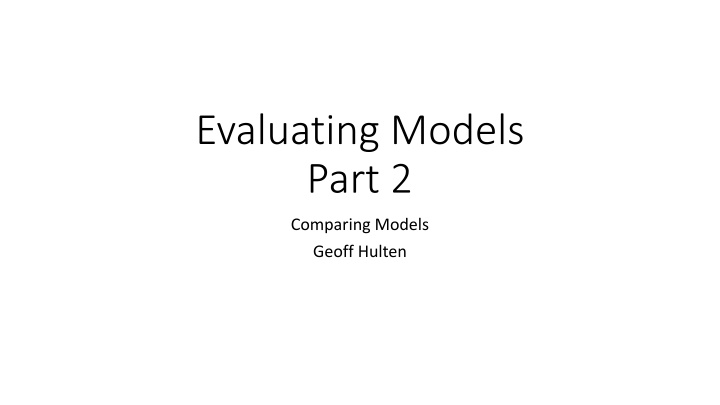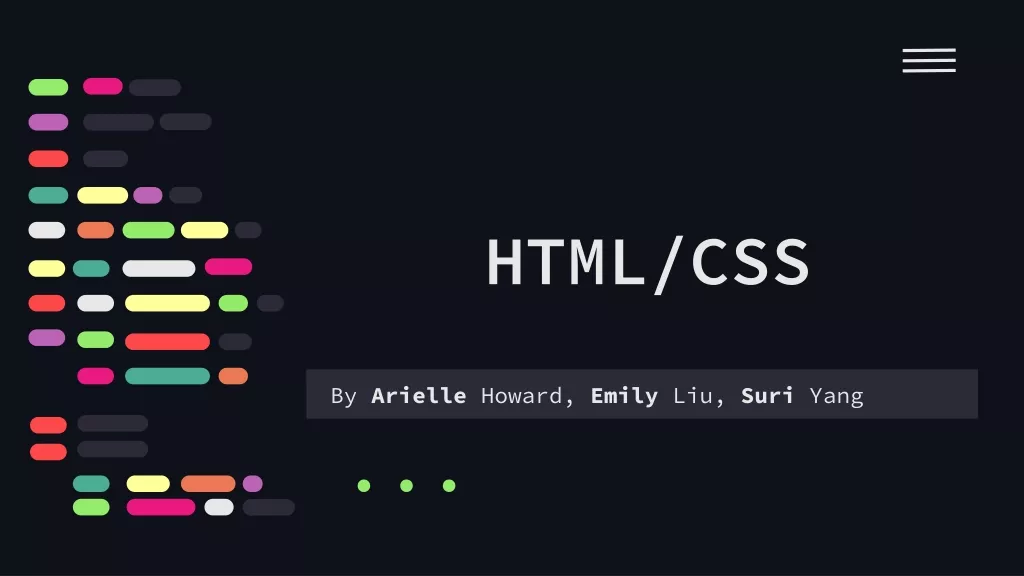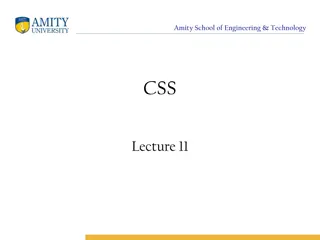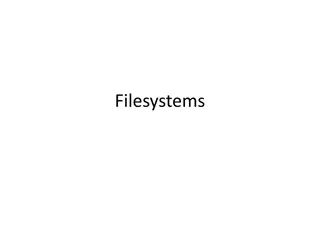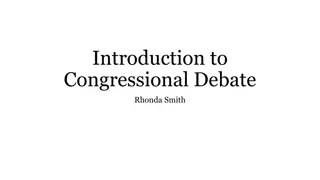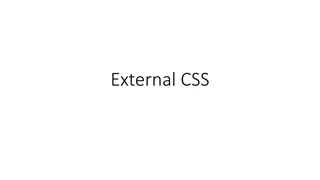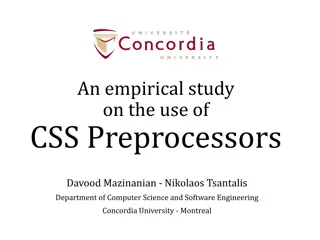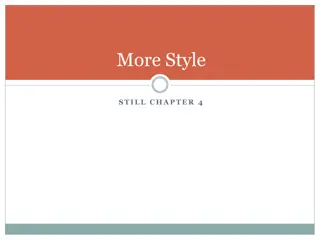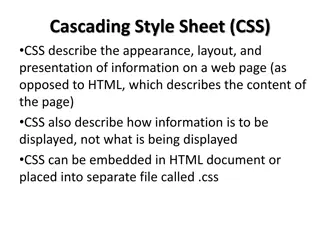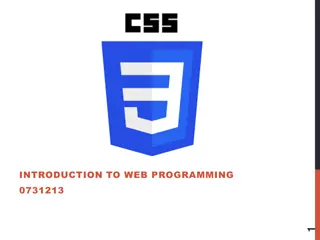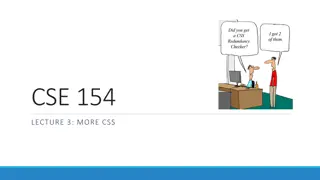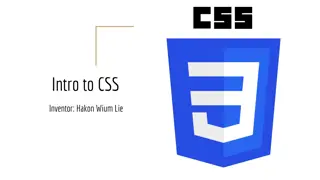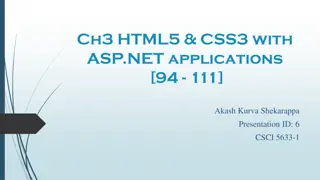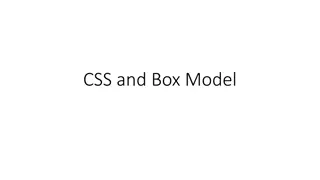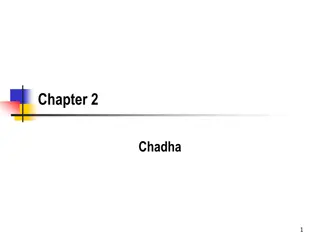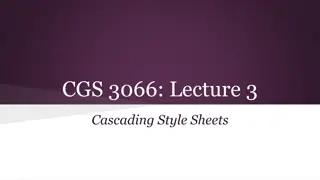Congressional Constituent Services System (CSS) Electronic Files
Explore the content of .DAT files in the Congressional Constituent Services System (CSS), including how to access, view, and manipulate records using Microsoft Office applications like Excel. Learn about accompanying documentation and considerations for managing related correspondence records. Discover tips for opening .DAT files in Excel and handling potential errors due to data size limitations.
Download Presentation

Please find below an Image/Link to download the presentation.
The content on the website is provided AS IS for your information and personal use only. It may not be sold, licensed, or shared on other websites without obtaining consent from the author.If you encounter any issues during the download, it is possible that the publisher has removed the file from their server.
You are allowed to download the files provided on this website for personal or commercial use, subject to the condition that they are used lawfully. All files are the property of their respective owners.
The content on the website is provided AS IS for your information and personal use only. It may not be sold, licensed, or shared on other websites without obtaining consent from the author.
E N D
Presentation Transcript
Evaluating Models Part 2 Comparing Models Geoff Hulten
How good is a model? Goal: predict how well a model will perform when deployed to customers Use data: Train Validation (tune) Test (generalization) Assumption: All data is created independently by the same process.
What does good mean? Training Environment Performance Environment Build Model Training Data Dataset Deploy Customer Interaction Testing Data Evaluate Model Estimated Accuracy Actual Accuracy How do they relate? ??????( ) ??????( )
Binomial Distribution Test n testing samples, how many correct? Flip n coins, how many heads?
Estimating Accuracy # ??????? ? ????????(1 ????????) ? ???????? = ?????????
Confidence Intervals Upper = Accuracy + ?? ????????? Lower = Accuracy ?? ????????? Confidence 95% 98% 99% ?? 1.96 2.33 2.58
Confidence Interval Examples Confidence 95% 98% 99% ????????(1 ????????) ? # ??????? ? ????????? ???????? = ?? 1.96 2.33 2.58 Upper = Accuracy + ?? ????????? Lower = Accuracy ?? ????????? ????????? N # correct Accuracy Confidence Interval Width 100 15 15% 3.5707% 95% 6.998% 1000 500 50% 1.5811% 95% 3.099% 10000 7500 75% 0.433% 99% 1.117%
Summary of Error Bounds Use error bounds to know how certain you are of your error estimates Use error bounds to estimate the worst case behavior
Comparing Models Training Environment Performance Environment Build a New Model Training Data Dataset Customer Interaction Deploy?? Testing Data Evaluate Models Actual Accuracy Estimated Accuracies ??????(????) ??????(??????) ??????(????) ??????(??????) Which will be better?
Comparing Models using Confidence Intervals IF: Model1 Bound > Model2 + Bound Model(89%) Bound Model(80%) + Bound Samples 100 82.9% 87.8% 200 84.7% 85.5% 1000 87.0% 82.5% 95% Confidence Interval
Cross Validation Instead of dividing training data into two parts (train & validation). Divide it into K parts and loop over them Hold out one part for validation, train on remaining data K = 1 K = 2 K = 3 K = 4 K = 5 Train on Validate on ??????????=1 ??????????(1 ??????????) ? ? ???????? ??????????? ?
Cross Validation pseudo-code totalCorrect = 0 for i in range(K): (foldTrainX, foldTrainY) = GetAllDataExceptFold(trainX, trainY, i) (foldValidationX, foldValidationY) = GetDataInFold(trainX, trainY, i) # do feature engineering/selection on foldTrainX, foldTrainY model.fit(foldTrainX, foldTrainY) # featurize foldValidationX using the same method you used on foldTrainX totalCorrect += CountCorrect(model.predict(foldValidationX), foldValidationY) accuracy = totalCorrect / len(trainX) upper = accuracy + z * sqrt( (accuracy * (1 - accuracy) ) / len(trainX) ) lower = accuracy - z * sqrt( (accuracy * (1 - accuracy) ) / len(trainX) )
When to use cross validation K = 5 or 10 k-fold cross validation Do this in almost every situation K = n Leave out one cross validation Do this if you have very little data And be careful of: Time series Dependencies (e.g. spam campaigns) Other violations of independence assumptions
Machine Learning Does LOTS of Tests For each type of feature selection, for each parameter setting # Tests P(all hold) # Tests P(all hold) 1 .95 1 .999 10 .598 10 .990 100 .00592 100 .9048 1000 5.29E-23 1000 .3677 95% Bounds 99.9% Bounds
Summary Always think about your measurements: Independent test data Think of statistical estimates instead of point estimates Be suspicious of small gains Get lots of data!
